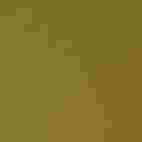Northern Red Bishop
At a Glance
Native to Africa, this colorful weaver is a popular cagebird, and escapees have established nesting populations in coastal southern California and in the Houston area in Texas. Escaped birds are sometimes seen elsewhere, especially in Florida, and the species is well established in Puerto Rico.
All bird guide text and rangemaps adapted from Lives of North American Birds by Kenn Kaufman© 1996, used by permission of Houghton Mifflin Harcourt Publishing Company. All rights reserved.
Category
Perching Birds
IUCN Status
Least Concern
Habitat
Fields, Meadows, and Grasslands, Freshwater Wetlands, Shrublands, Savannas, and Thickets
Behavior
Direct Flight, Hopping
Range & Identification
Description
4 1/2" (11 cm). A compact, finch-like bird with a short tail. Adult male in breeding plumage is bright orange-red with a black cap, wings, and belly. Females, non-breeding males, and young are brown above, buffy yellow on the face and chest, with heavily streaked back and dark stripes on the head. Similar to some American sparrows, such as Grasshopper Sparrow, but its very short, rounded tail is distinctive.
Size
About the size of a Sparrow
Color
Black, Brown, Orange, Red, Tan, White, Yellow
Wing Shape
Rounded, Short
Tail Shape
Rounded, Short, Square-tipped
Songs and Calls
Song is a complex series of twittering and buzzing notes.
Call Type
Buzz, Chirp/Chip, Complex, Twitter
Habitat
Widespread in semi-open habitats, including brushy thickets, overgrown fields, and the edges of marshes and ponds.
Sign up for Audubon's newsletter to learn more about birds like the Northern Red Bishop
Behavior
Eggs
2-4 plain blue eggs. Incubation is by the female, about 2 weeks.
Young
Female feeds the young in the nest for about 2 weeks until they fledge.
Feeding Behavior
Usually forages in small flocks, feeding on the ground or in dense low cover.
Diet
Feeds mainly on seeds, especially those of grasses; also some insects.
Nesting
Male performs a courtship display by flying about slowly over his territory with his red and black body plumage fully puffed out. The male builds the nest, a spherical mass of plant stems with the entrance on the side, and the female adds finer material inside to line the nest.




